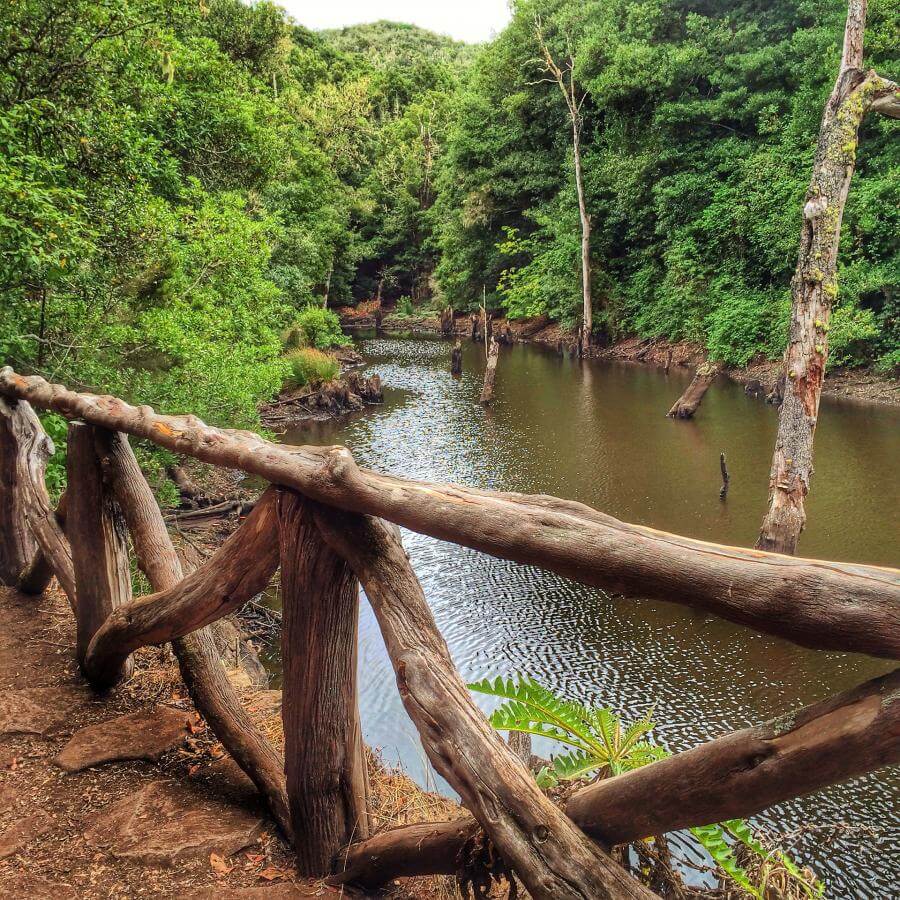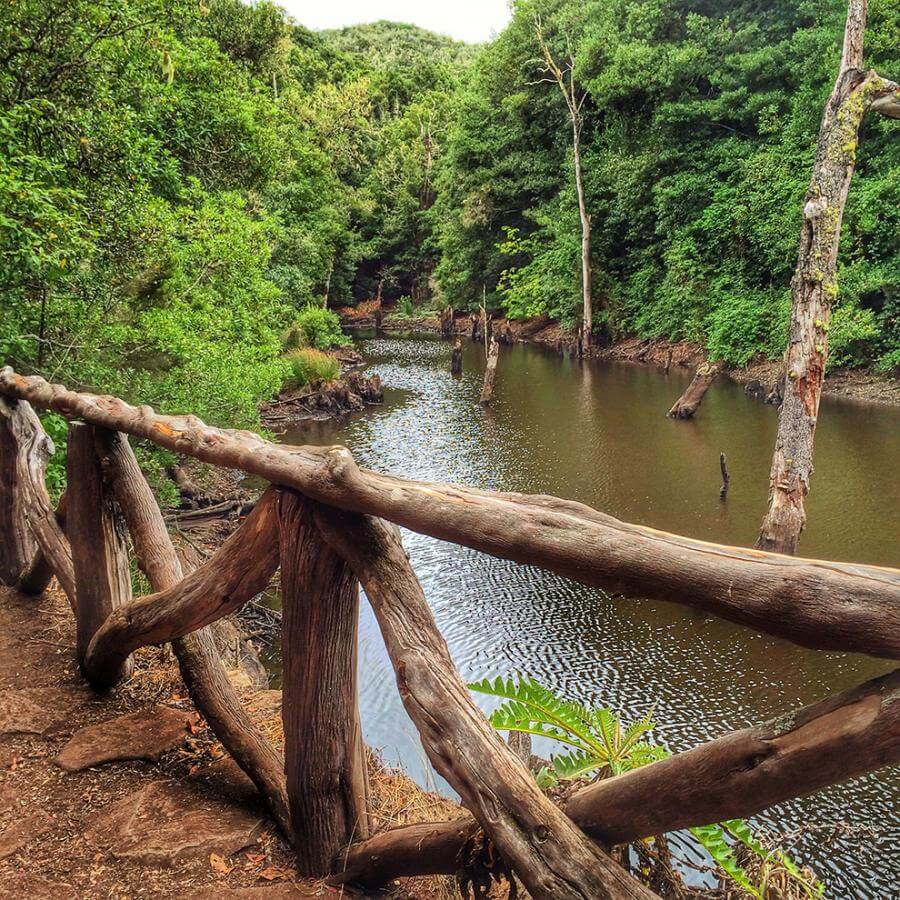Tranquil and peaceful, spring waits patiently to be awakened splendid and exuberant in Garajonay. This ancient forest regales us with its beauty throughout the year, but it is in spring in particular that it reveals itself in all its splendour, decked out in colours for its great annual function.
Garajonay becomes the stage on which this awakening is played out. Venturing along its trails enables us to enjoy the spectacle up close and gradually discover every single tone, every texture, every aroma this season brings us.
Innumerable endemic species take possession of the place, such as the blue blugloss, an endangered species of shrub so vulnerable that it is a privilege to observe it in all its splendour. It can be seen in flower until the month of April, going on to fruit in the months of May to July.
Every nook and cranny, every bend in the path surprises us with a new flower, a new plant, gardens created by nature with an inimitable, changing design.
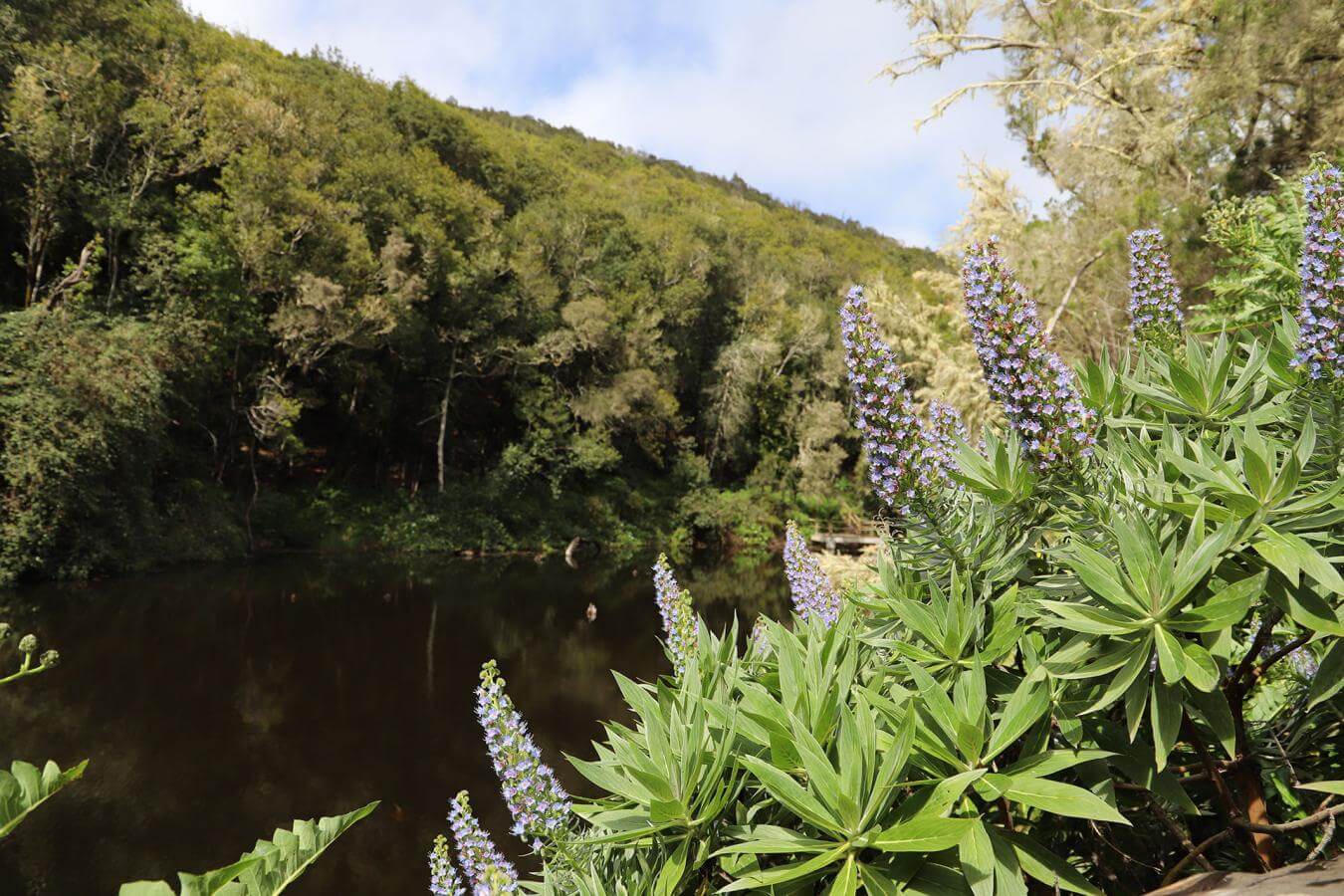
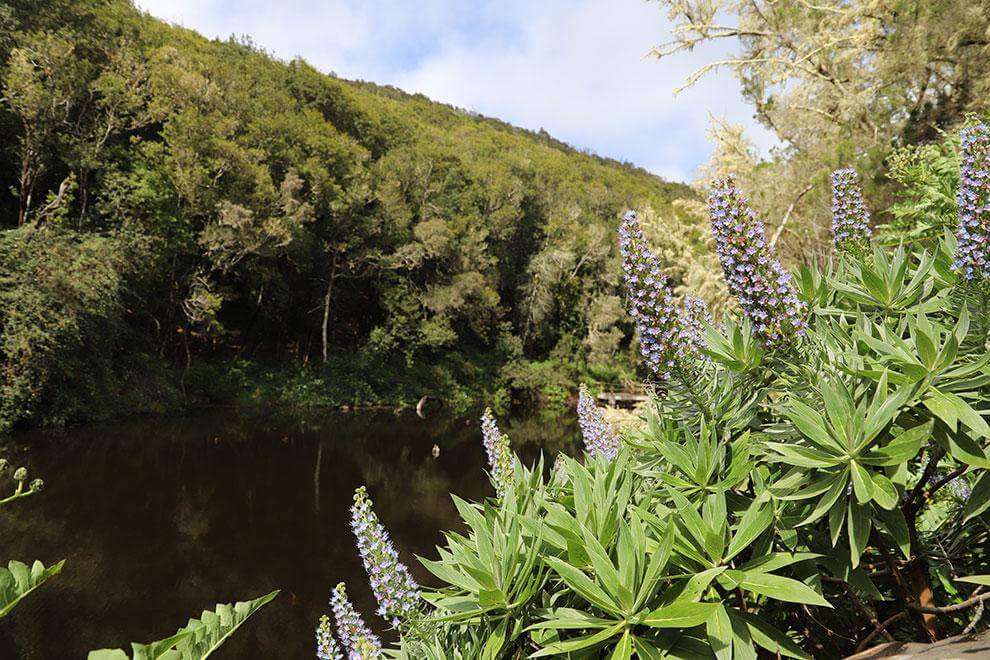

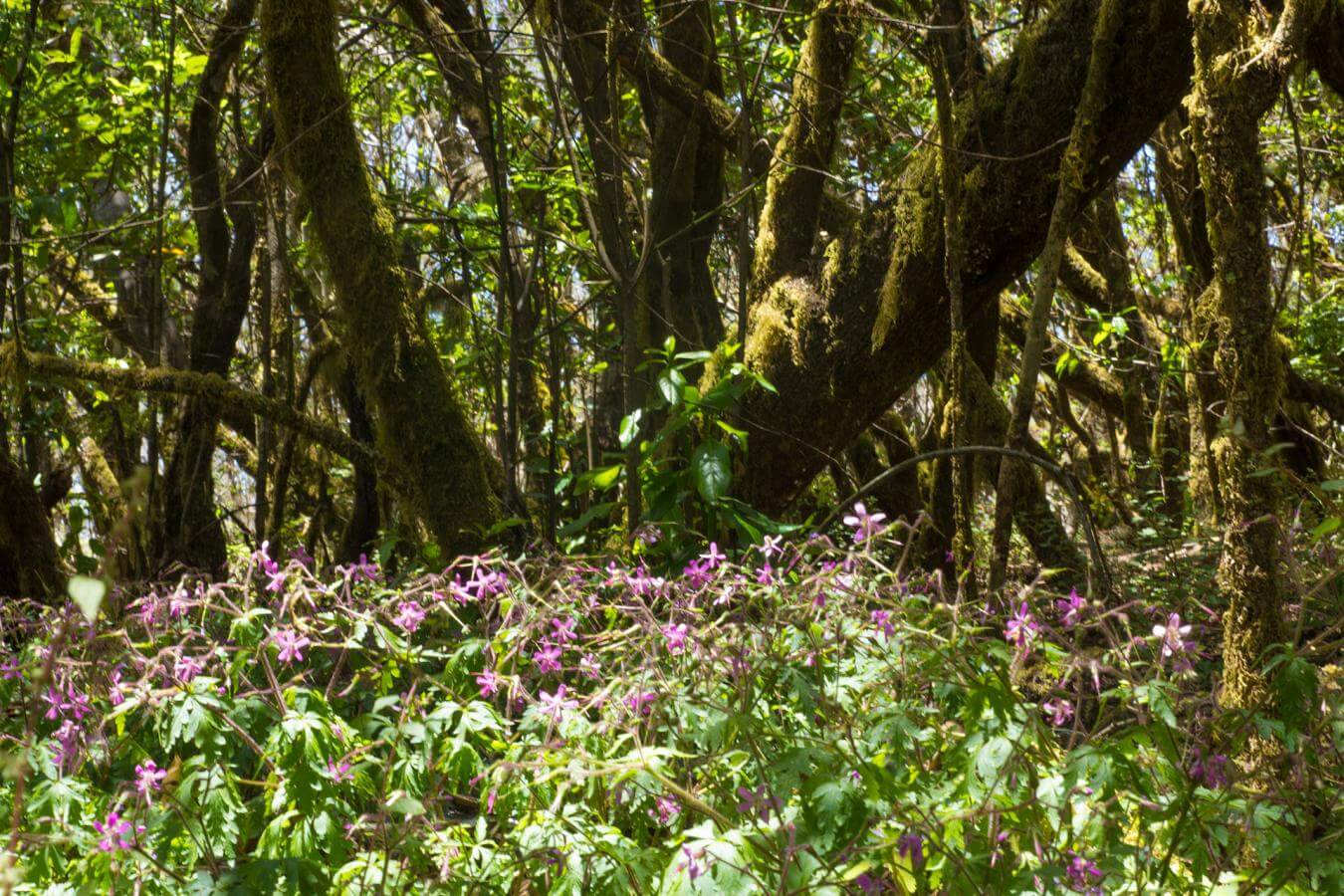
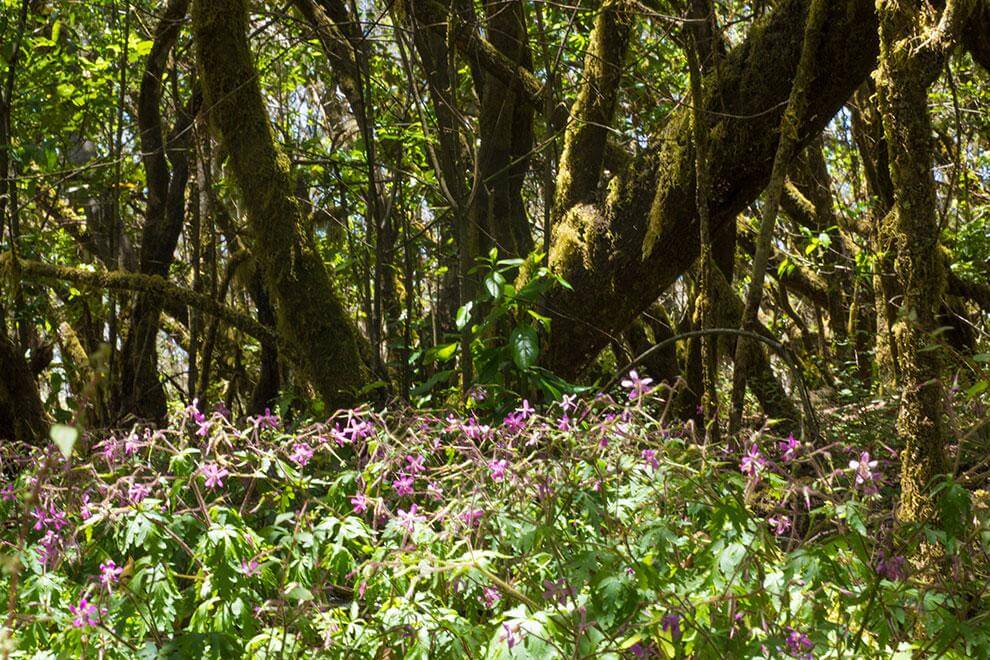

Flowerings:
1. Late March - early April:
Canarian tree heath, Broussonet's daisy, Cistus chinamadensis (a shrub with pink flowers), Canary spurge; sow thistle, girdana (a yellow shrubby plant); Canary Island bellflower; field forget-me-not, arcila (a herbaceous plant with inflorescences), Canary Islands olive, Canary laurustinus, Canary buttercup.
2. Late March - early May:
Codeso (a bush typical of mountainous areas), Cistus chinamadensis (a shrub with pink flowers), Gomera sowthistle, Canary Islands St. John's wort, Hypericum reflexum (a shrub with pale-coloured flowers), large-leaved St John's wort, girdana (a yellow shrubby plant), greenovia (a large-leaved plant typical of La Gomera), giant geranium, Canary Islands Balm, elderberry, Canary Island flat giant houseleek, Canary buttercup.
3. Late May - early June:
General sprouting of the forest, elderberry, Platycodon Erica, codeso (a bush typical of mountainous areas), Montpellier cistus, spoon-leaved aeonium, Crambe strigosa, Gomera crown daisy, Tree of Love, Gomera houseleek, Canary Islands St. John’s wort, large-leaved St John's wort, Hypericum reflexum (a shrub with pale-coloured flowers), Canary island flat giant houseleek, Canary Islands Balm, Scrophularia langeana (herb found on La Gomera with small reddish flowers), Canary Island Aeonium, Hansen's cineraria.
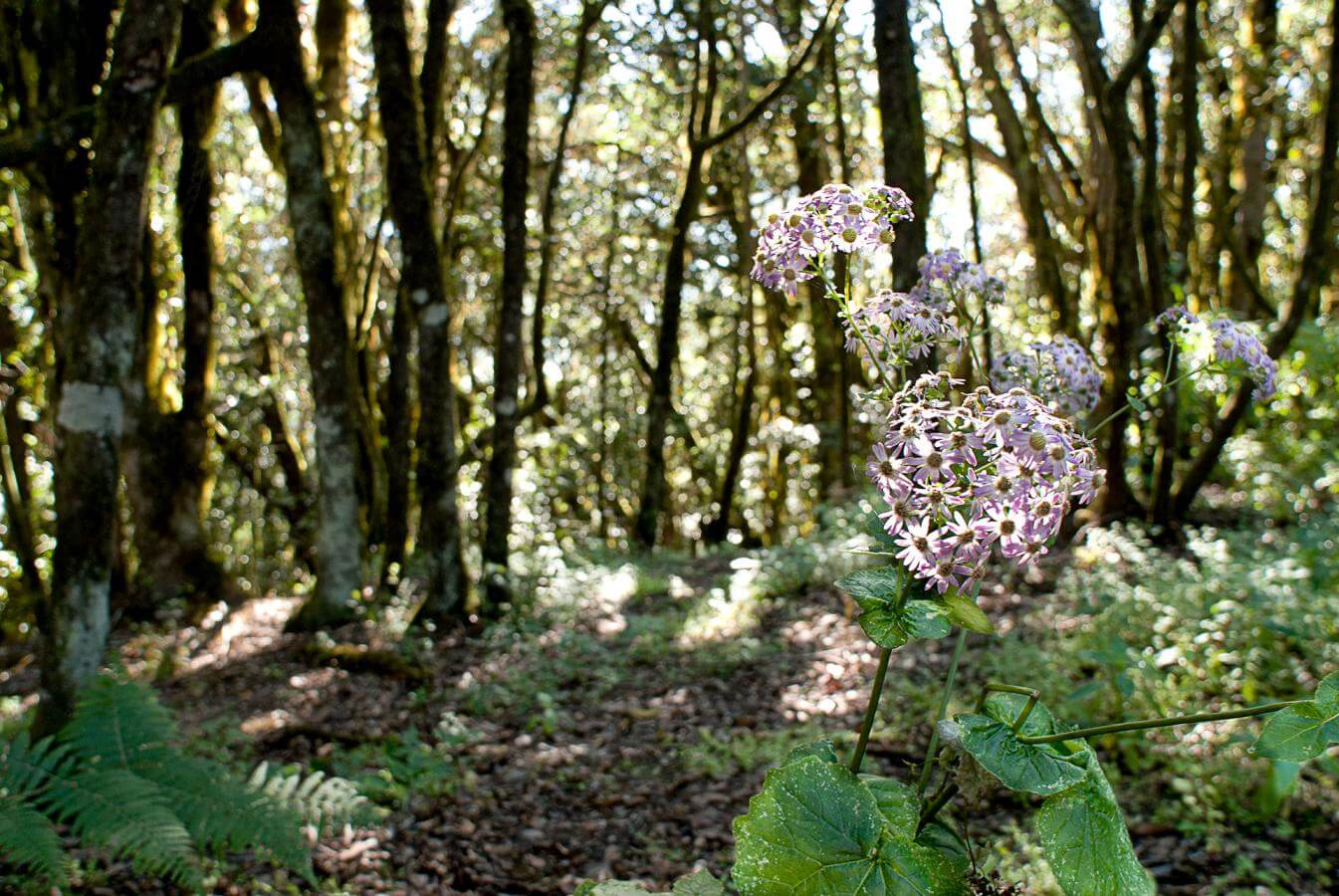
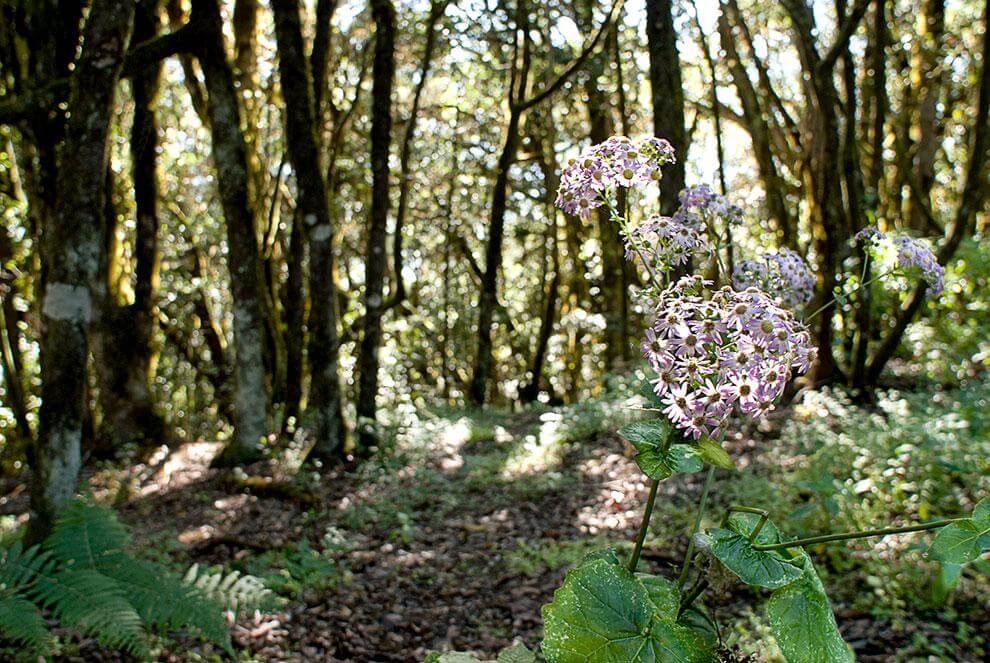

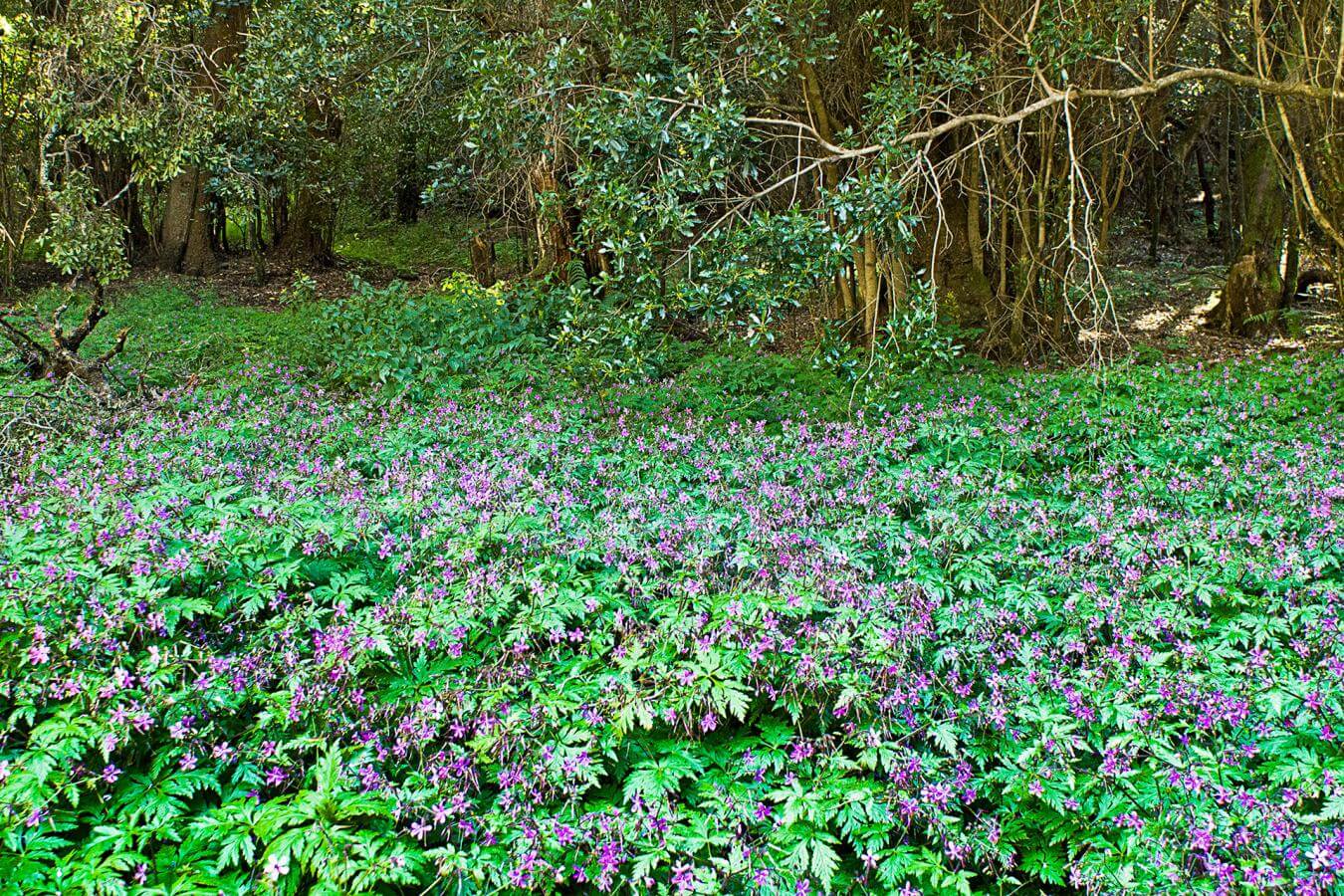


This season of the year also beckons us to get up very early to witness the sunrise from the viewpoints in the area of Los Roques, or wait for the sunset at Alto de Garajonay, and if you feel so inclined, you can observe the stars on clear days.
There are routes inside the park enabling one to see the flowering plants, like Route 15 “La Meseta de Hermigua (Las tres cascadas)”. Its tranquillity and ease of access enable one to enjoy this season to the full. Along the forest trail that goes from Meriga to El Cedro the spectacle of light filtered by the treetops illuminates the explosion of colours found here. The rest area of Las Creces is ideal for eating a sandwich and continuing along the circular route (in this area, from March to May you can see the flowering of the “round-leaved crane’s bill”).
If you're wondering why spring chooses Garajonay... It’s because it found the perfect setting here...
